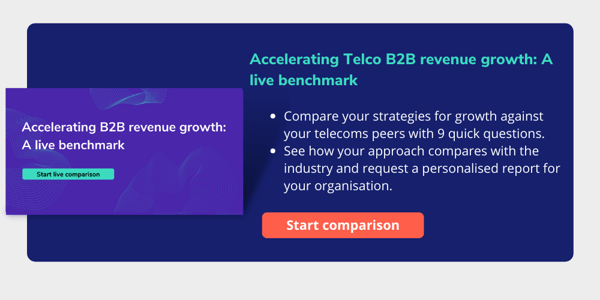5G technology promises a whole new level of hyperconnectivity and innovation across the board.
And while widespread adoption of 5G isn’t expected until 2025, over the next 2 years, we’ll see dedicated 5G networks for specific enterprises, organizations and customers.
From doctors using Ericsson’s 5G-enabled specialized haptic feedback gloves and virtual reality (VR) equipment to perform diagnosis and surgery from anywhere, to sports fans using AT&T’s 5G aerial camera on ESPN to control camera angles as they watch games – 5G provides endless industry opportunities that are the driving force behind its roll-out.
And customer expectations for game-changing experiences enabled by 5G continue to creep up – so it’s better to tap into the 5G opportunity sooner rather than later.
In this blog, we’ll explore the benefits 5G ushers in as well as a few challenges. We’ll then delve into why monetizing 5G is top of the agenda for many CSPs and finally wrap up with some real-world use cases.
5G brings 3 key benefits to the table
5G is a transformative technology that provides a host of benefits – here’s the top 3:
1. Speed
Much of the hype around 5G has to do with speed – and with good reason. 5G promises to provide connectivity speeds up to 100x faster than 4G.
This is fast enough to download a 2 hour movie in fewer than 10 seconds, versus around 7 minutes with 4G.
But the speed of 5G is just the tip of the iceberg.
2. Capacity
5G has the ability to connect thousands of devices in the Internet of Things (IoT), all at the same time.
To be specific, 5G supports a whopping 1 million devices for every square kilometer. So you can wave goodbye to patchy service in busy areas and unreliable network connections. This will also enable even more connected devices like self-driving cars and smart home appliances.
3. Low latency
Another huge benefit of 5G is lower latency. This is the time it takes for a device to make a request from a server, and then get a response. 5G reduces this time down to practically zero. This minimal lag is ideal for virtual reality (VR) and augmented reality (AR) applications. It’s also vital to specific industries such as healthcare and transport.
With speed, capacity and low-latency, 5G is designed to take services and solutions to the next level, fuelling next generation business models and completely transforming how we work and live our lives.
2 main challenges of investing in 5G
The path to a successful 5G future is potentially littered with multiple challenges.
And one of the biggest challenges CSPs face is cost.
The successful roll-out and maintenance of 5G requires multi-billion dollar 5G infrastructure investments.
Accenture Strategy estimates that telecom operators will invest as much as $275 billion nationwide over seven years as they build out 5G. So while 5G is a transformative technology, it doesn’t come cheap.
But it’s a price worth paying.
Developing a cost-efficient strategy is tricky when putting together your 5G business case. So it’s good to consider different ways you could shave those costs down.
For example, partnerships are a great way to provide 5G value-added services to enterprises without having to invest heavily in new capabilities, skills and technology.
Another challenge when it comes to 5G is the potential security risks.
Overall, most businesses (68%) trust that 5G will increase business security. But there are security issues inherent to 5G network architecture. The number of connected devices in the IoT, multiple networks and user privacy are just a few concerns. A study from Accenture showed 74% of businesses believe that having more connected, intelligent devices increases the risk of data breaches.
So you need to make network and individual user security a top priority when it comes to building, maintaining and optimizing the 5G network for businesses and enterprises.
Once you overcome these challenges, your 5G ambitions can be monetized and tangible business use cases can emerge.
How CSPs can monetize 5G
Firstly let’s confirm what 5G monetization actually means.
It’s defined as the strategies, business models, and tactics that CSPs put in place to earn revenue from their 5G infrastructure. By monetizing 5G you can recoup the subsequent capital investment required to support your 5G strategy to form a worthy business case.
There are a few strategies to help you monetize 5G.
69% of CSPs believe that enterprise revenue is the most important source of 5G growth. So enterprises are the best place to start on your 5G monetization journey.
The biggest opportunity for enterprises around the world is 5G’s ability to connect more devices and applications and the possibilities this brings for their customers.
Other than focusing on enterprises, you need to offer value-added services, as it’s not enough to just have 5G. You can offer value-added services by working with partners. For example, Nokia has partnered with M1 and Starhub to usher in a new era of game-changing 5G to support Singapore’s digital economy. It will enable new use cases – from education to healthcare.
30% of use cases need network slicing which is another way to monetize 5G.
It’s where CSPs can offer a dedicated “slice” of their 5G network to meet specific customer demands. And there’s billions of dollars of business potential from network slicing according to Ericsson - valuation of USD 200 billion by 2030 with a strong CAGR (Compound Annual Growth Rate).
Network slicing opens up new revenue streams in different industries and enterprises. And it will be highly relevant for many use cases – from mobile gaming to AR and VR.
Another important way to monetize 5G is to utilize the right technology.
CSPs are focusing on technology enablement by investing in agile and scalable infrastructure to enable them to pivot quickly and rapidly roll out new 5G capabilities.
5G use cases in the real world
In the Accenture study it was found that 79% of businesses worldwide believe that 5G will have a significant impact on their organisation.
But what exactly is 5G actually capable of?
As we mentioned, although full-scale adoption of 5G may be a couple of years away, a lot of organisations and enterprises already have their foot on the gas.
These use cases already in motion show what’s possible with 5G.
One use case is smart cities. The Albu Iulia Smart City is a pilot project meant to transform Albu Iulia Municipality in Romania into a smart city.
It’s being developed with Orange and has everything from smart lighting to smart education and healthcare.
With the smart system technology from Orange, transport users can locate and track vehicles in real time, as well as get secure Wi-Fi access while travelling. An e-bike rental and sharing system is also in the works, which will enable wireless battery charging for a convenient and eco-friendly journey.
Another use case is communication. The first wave of video calls will no doubt be with our phones. But in the long-term, 5G will enable 4K and even 8K video to be exchanged between AR and VR headsets.
With 5G’s ability to stream high capacity data in real-time, video-calling can go 360°, creating more immersive experiences than we’ve ever seen before.
More immersive sporting events are another use case of 5G. Research from Amdocs and Ovum suggests 91% of the world’s leading mobile operators plan to hold trials of 5G sporting experiences at stadiums. For example, in the UK, EE is connecting Wembley Stadium to their 5G network, which will significantly boost the speed and capacity at this major sporting venue. This will enable new experiences for spectators and fans.
Elsewhere in the world, the German FA plans to let fans view data insights in real time – such as how fast a player is sprinting using AR.
So in just about every industry, there are thousands of ways 5G can be used to accelerate digital transformation, make services more convenient, and massively improve customer experiences.
Are you ready for 5G?
5G is making headlines all over the world as it has the power to transform digital transformation in every part of our lives.
For those that want to be a part of the next-generation of connectivity, there are many decisions to be made – from use cases and technology, to monetization strategies and costs.
But it’s time to start thinking about it now to make sure you don’t slip behind in an unforgiving competitive landscape.
For more insights and strategies you need for 5G success, check out our free guide: How Telcos can monetize 5G.
.png?width=200&height=103&name=CloudSense%20-%20TelcoDR%20(white%20no%20background).png)












.png?width=600&name=5G%20guide%20image%20(1).png)





